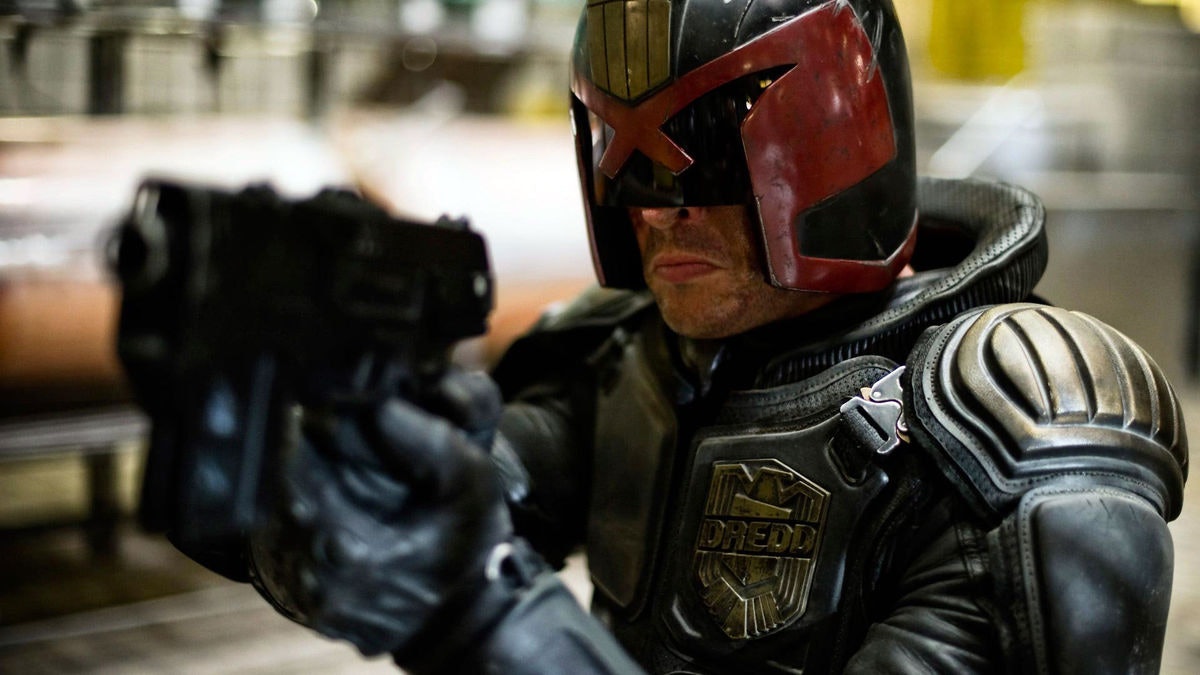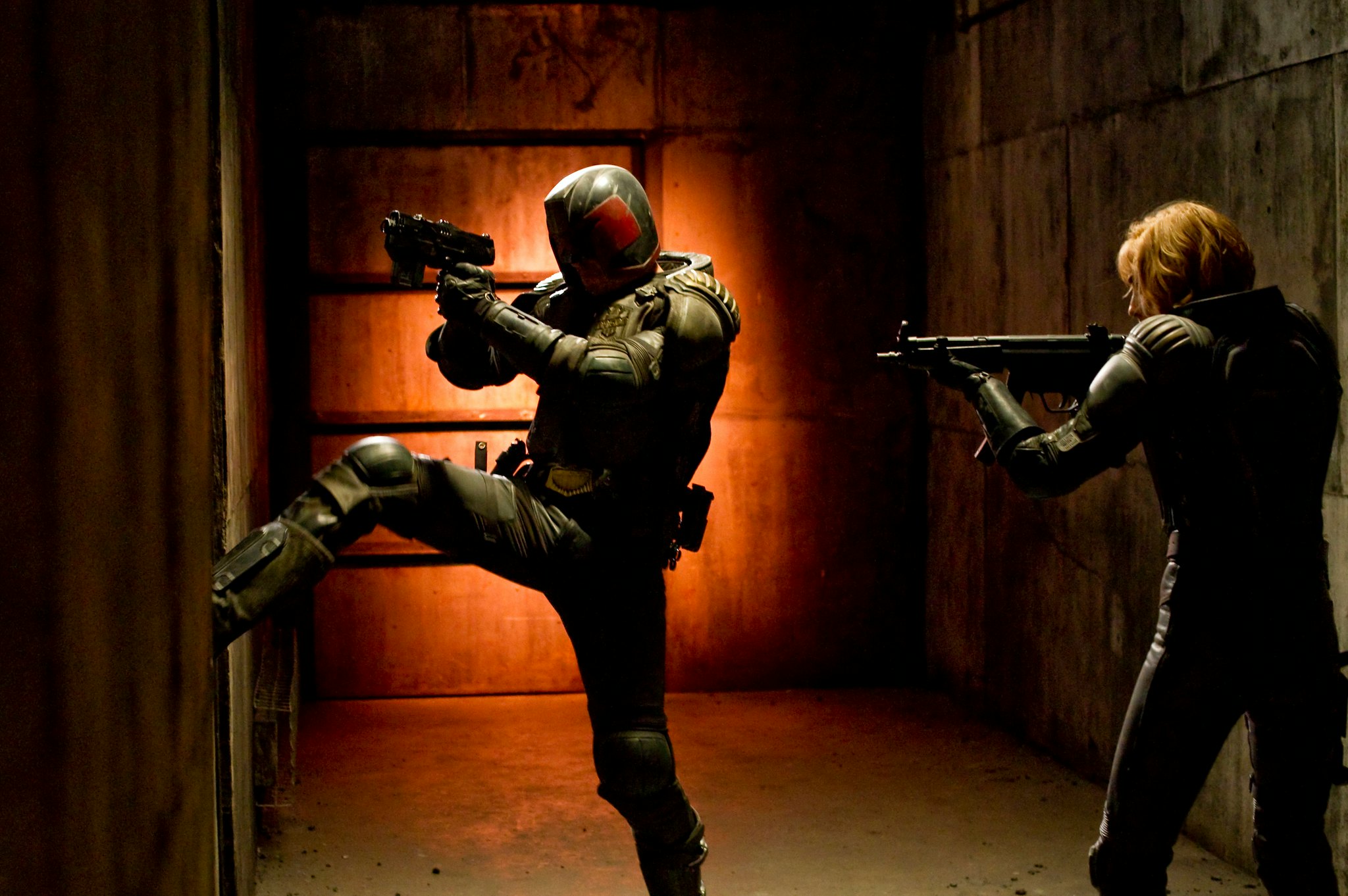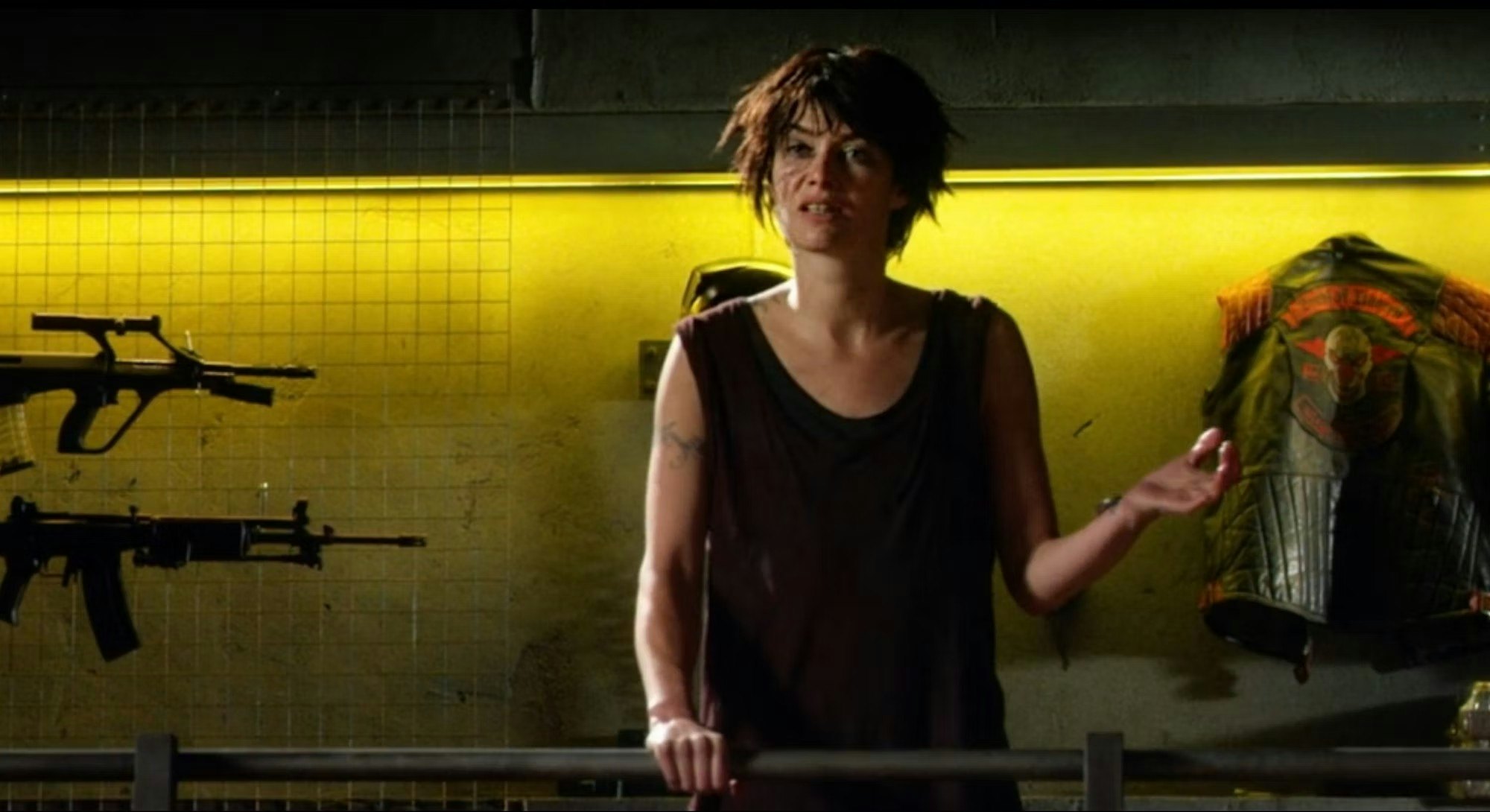
Many modern comic book adaptations devote their entire running times to belabored origin stories, only finishing their set-up when the movie is nearly over, to tease a further adventure in the sequel. But 10 years ago, Alex Garland made a dystopian cult classic that doesn’t waste any time getting to what both longtime fans and newcomers want to see.
Instead of attempting to adapt a beloved multi-part epic or incorporate several strands of classic continuity, Dredd tells a simple, straightforward story with a handful of characters, largely confined to a single location. That may have been dictated partly by budget constraints, but it’s still a refreshing contrast to bloated superhero movies.
Within its first two minutes or so, Dredd lays out its basic premise in a voiceover from its star, Karl Urban. Released 10 years ago this week, Dredd is based on a comic book character with decades’ worth of adventures, a huge supporting cast, and intricate mythology, but screenwriter Alex Garland dispenses with all of that quickly and efficiently.
Urban’s Judge Dredd is a law-enforcement officer in a dystopian future, where “judges” function as the entire legal system, investigating crimes, arresting suspects, passing judgment, and carrying out sentences, all at the same time. Dredd operates in Mega-City One, a massive megalopolis that takes up most of the east coast of the former United States.
Mega-City One is home to 800 million residents, but Dredd and his rookie partner Judge Anderson (Olivia Thirlby) are focused on just one 200-story building known as Peach Trees, which houses 75,000 people. They arrive to investigate a triple homicide, three low-level gang members who have been skinned alive and then thrown from a balcony 200 stories up. Nearly the entire movie takes place inside Peach Trees, where Dredd and Anderson fight for their lives against the forces of crime boss Madeline “Ma-Ma” Madrigal (Lena Headey).

Dredd opens with an exciting car chase as Dredd tracks down a group of unrelated perps. We then follow Dredd to headquarters, where he’s paired up with Anderson. It takes only 15 minutes to get Dredd and Anderson into Peach Trees, where they remain for the rest of the film. The goals and the stakes are clear, as Ma-Ma decides that the judges cannot be allowed escape with her underling Kay (Wood Harris), a potential witness who could expose her extensive criminal operation.
The vice that Ma-Ma peddles is a futuristic inhalant called Slo-Mo, which alters brain function so the user perceives everything happening at one percent of normal speed. That allows for some cool special effects, although it otherwise just functions as a reason to pit Ma-Ma against the judges. She takes over the computer systems that control Peach Trees and initiates a lockdown, which closes the building off from the outside world. As residents cower in their apartments, Ma-Ma’s followers hunt Dredd and Anderson across the building’s many levels.

As in the source material, Dredd wears a large helmet that obscures most of his face, exposing only his mouth, which Urban keeps in a constant scowl. The 1995 Judge Dredd movie made concessions to star Sylvester Stallone by allowing him to remove the helmet, but Urban commits fully to the character, with his grim, stoic dedication to the law, and never takes the helmet off.
There isn’t much of the social satire of the Judge Dredd comics in Dredd, but there’s still some deadpan humor to Urban’s line readings, even the way he just says “Yeah” to queries from Anderson. Garland can’t resist throwing in a few quips, although Urban delivers them all with the same understated growl.

A mutant with psychic abilities that require her to keep her helmet off, Anderson ends up carrying the emotional weight of the movie, although she’s only slightly more demonstrative than her partner. Dredd is skeptical of Anderson at first, ready to put her through a Training Day-style trial by fire, but the two of them slowly work toward mutual respect, forged by their harrowing showdown with Ma-Ma. Thirlby holds her own alongside Urban’s imposing presence, and Anderson’s powers make her more superhero-like than Dredd.
There’s just enough character development to carry the movie along, but the main appeal is the action sequences, which director Pete Travis stages with intensity and clarity. Dredd and Anderson are under near-constant attack, and Travis escalates the action over the course of the movie, highlighted by a stunning sequence in which a hail of bullets takes out an entire level and murders dozens, all in a futile effort to take out the two judges. Travis and cinematographer Anthony Dod Mantle find creative visual approaches to depicting the same space, making use of deep focus and extreme close-ups to convey a sense of claustrophobia and paranoia.
Dredd wraps itself up in a little over 90 minutes, leaving room for sequels but also providing a satisfying end to this particular story. There’s a whole world of Judge Dredd comics that may or may not provide source material for future adaptations, but that’s outside the scope of this movie. It tells a lean, engrossing story full of propulsive action, and then it’s over. Other comic book movies should take note.
Dredd is streaming on Amazon Prime through MovieSphere.







